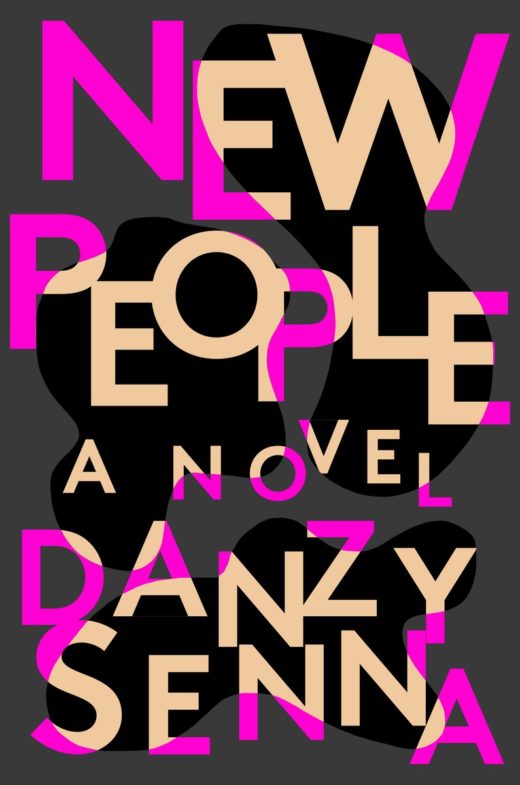- Miami Motel Stories: Little Havana’s History Through Immersive Theater

- Ghosts of the Archive: A Review of Rosa Alcalá’s MyOther Tongue
Beige Bubble Bodies: New People by Danzy Senna

New People by Danzy Senna, Riverhead Books, 240 pp.
The neutrally named and orphan Maria, a border girl, as it were, whose nebulousness crosses, re-crosses, and double-crosses racial and cultural spectrums and expectations, steers toward the excessive closeness, to an infinite jest, of mixed race America and its vague embodiments. Senna is, on the face of it, in exclusive conversation with black-and-white America. But the novel’s other deviations of grayness and brownness provoke, drift, and pump up the volume on Maria’s out of body experiences as she walks in and out of Latina states.
Maria melts into a Mexican and momentarily becomes Consuela, the Latina nanny. She is a “one-dropper, that peculiarly American creation,” a word that elicits and fits too closely to another noun of the plantation era: share-cropper. An aspiring academic and creative writer, Maria is aware that “she will never write a work of fiction. She is a scholar; she only works with given materials.”
Our scholar, dissertating on the music of the Peoples Temple in Jonestown, Guyana, passes on her knowledge of what it means to have been born before “the Era of Mulatto Martyrs,” but during “the Dark Ages of Mestizo Abandonment.” It is 1996, and Seinfeld, Gotham’s “show about nothing,” is background chatter. Our readerly mise en scène encompasses “being black and looking white” as “enough of a freak show.” But race is not always so predictable. Or perhaps it is for the “new people” who may not be so new after all. Maybe they are antiqued new people, the kind who “have begun to have currency” with their dark phenotypes once they “know where to go, who to be around, who to avoid, how to frame the conversation.” The novel’s titular new people, subjects of a documentary bearing the same name, are savants of racial discourse. They possess “what amounts to a graduate degree in race,” as the rest of white America lingers at the preschooler stage.
New People touches on the performance and the projection of race by those who self-identify with social and political categories and tap into, as some may say these days, their wokeness. Maria’s accumulated ruminations, though, for someone at the torturous all but dissertation (ABD) stage, read like––and at times pun on––the canon of an undergraduate liberal arts education. Maya Angelou, James Baldwin, Zora Neale Hurston, and Audre Lorde are referenced. The foundational feminist anthology This Bridge Called My Back: Writings by Radical Women of Color turns to This Bridge Called My Car, and the X that is manifested here is not Malcolm’s but that of the LA punk rock band.
Maria’s experiences are inescapably informed by her undergraduate days at Stanford, an institution that she continually harkens back to. There, classmates christened themselves with new names such as “Goya, like the artist––like the beans.” It’s as though Maria is cognitively at a standstill. She’s “tired of being smart.” And yet what new theories is Maria fleshing out in graduate school? Her body is invariably the evidence, the body that will always matter, and that asks how such corporeality appears. Maria’s emergence reminds us, at the closing of the twentieth- and dawning of the twenty-first century, that Jerry went to jail in Seinfeld, that Friends came to a close, that the dot-com bubble also burst, and that Heaven’s Gate, a California-based cult, also committed mass suicide in their search for other levels of the human. Senna is inching in on a beige utopia, a place that will inevitably rupture and, one can only speculate, spill into performative extremes.
This is a contemporary work, a college novel populated by new readers, new “mestizo mulatto mutt[s]” who may want to see their broad range of mixtures in present-day fiction, and to find somebody who is real––or close to real. Senna’s artistic form ushers in the unreal, ambivalence, more questions, and an unfinishedness around multiethnic formations and their clusters. Even Maria’s dissertation is incomplete––a motif of almost there-ness, of an unmanageable selfhood in a mixed and remixed America open to revision.
Claudia Milian teaches at Duke University and is the author of Latining America: Black-Brown Passages and the Coloring of Latino/a Studies.








